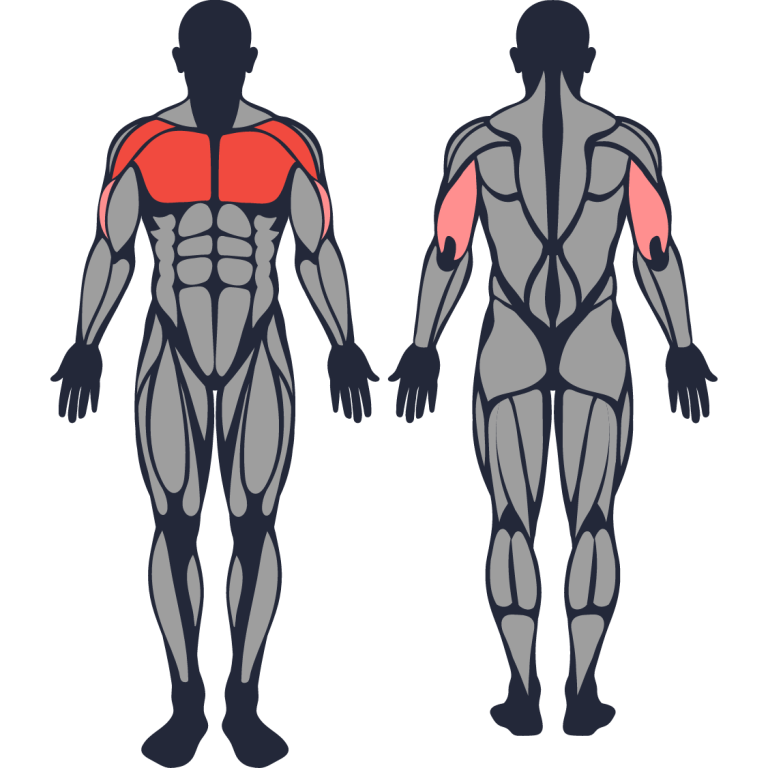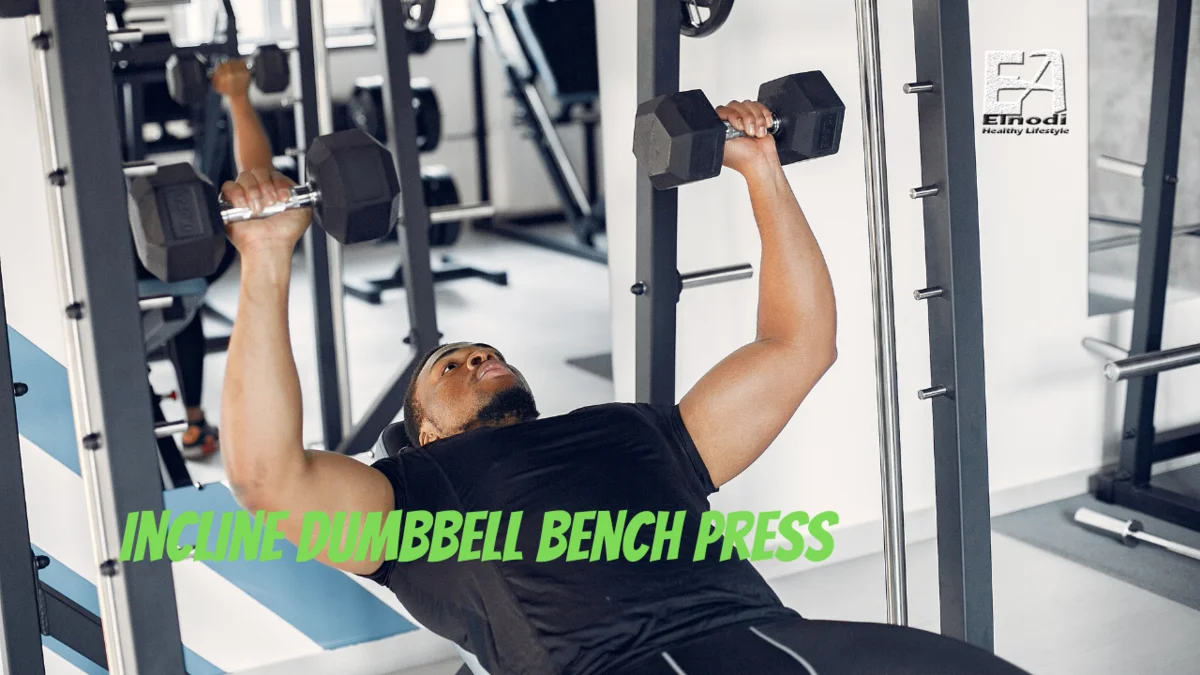Do you want to increase your bench press strength but don’t have the time or equipment to do a traditional bench press? Then incline dumbbell presses are perfect for you! In this article, we will discuss the best incline dumbbell bench press tips and tricks with specific exercises that you can perform at home.
The bench press is one of the most popular weightlifting exercises and it is a great way to increase your strength and muscle mass. However, many people find that they cannot do a traditional bench press because it is too tough or uncomfortable. This is where incline dumbbell presses come in handy!
If you are looking for an effective way to increase your bench press strength without the need for heavy resistance, then incline dumbbell presses are the perfect choice! In this article, we will discuss some simple tips and tricks that will help you get the most out of this exercise.
Benefits of The Incline Dumbbell Bench Press
The dumbbell incline press targets the upper chest—specifically, the clavicular head of the pectoralis major—an part of the chest that is nearly entirely unengaged during other common chest workouts such as the standard bench press, incline pushups, and chest fly. The incline press also targets the anterior head of the deltoid muscle in the shoulders, often known as the front section of the shoulder.
When you execute the dumbbell incline press on a regular basis, you’ll create a more balanced chest and shoulder musculature, which will help to keep the shoulder joint stable and powerful.
Dumbbell incline presses naturally transition to a variety of pushing and pressing activities, such as pushing open a heavy door or putting goods away on high shelves.
The dumbbell version of the incline press is especially beneficial for correcting strength imbalances between each side of your body. It’s common for one arm to be stronger than the other. By using dumbbells to perform this exercise, each arm works independently, which prevents the dominant arm from “taking over” to complete the lift, improving strength and stability on both sides of the body.
Which Muscles Do the Incline Dumbbell Bench Press

The incline dumbbell press targets your chest and front deltoids first and your triceps second.
The incline dumbbell press tests your balance and coordination more than incline pushes with a barbell.
How to Do the Incline Dumbbell Bench Press

Before we get into the nuances of the incline dumbbell press form, make sure you have all of the necessary equipment for the incline dumbbell bench press, such as…
- A pair of dumbbells
- A sturdy incline bench (ideally an adjustable one)
- A pair of weightlifting wrist wraps and a weightlifting belt (optional)
According to research, the optimal angle for the incline dumbbell press is roughly 45 degrees, while greater and lower angles are equally useful. Lowering the angle will draw attention to your lower chest while raising the angle will draw attention to your shoulders.
As a result, I recommend starting with a 45-degree angle and only lowering it if this posture seems uncomfortable or like it’s mostly working your shoulders rather than your chest.
Step 1: Set up
Set a bench at a temperature of 30 to 55 degrees (45 degrees is a good beginning point). Sit on the bench with a dumbbell in each hand and rest the dumbbells on your thighs.
Lie back and nudge the dumbbells up until they’re on either side of your chest, holding them with your thighs.
Arch your back slightly, place your feet on the floor, elevate your chest, and tuck and squeeze your shoulder blades together. Consider pulling your shoulder blades into your back pockets as a cue.
Step 2: Press
Dumbbells should be pushed toward the ceiling. Allow them to drift closer together as they rise (some people like to touch them at the top of each rep, but this isn’t necessary). Your elbows should be practically locked at the top of the rep, and the dumbbells should be 1-to-2 inches apart or just touching.
Keep your shoulder blades “down and back,” your elbows 6-to-12 inches from your body, your lower back slightly arched, your butt on the bench, and your feet on the floor.
Step 3: Descend
Reverse the movement and lower the dumbbells to either side of your chest. You should feel a deep stretch in your pecs and the handles of the dumbbell should be level with your upper chest—about an inch lower than your collarbone.
Common Mistakes in the Incline Dumbbell Bench Press
This activity may appear deceptively straightforward, making it easier to miss potential errors. Continue reading to learn about potential concerns and how to avoid them.
Using Too Much Weight
You probably have a solid notion of how much weight you can manage for dumbbell bench presses or incline barbell presses if you’ve been doing them for a while. However, this does not guarantee that you will be able to lift the same amount while attempting the dumbbell incline press.
Because the incline press works smaller muscle groups than the flat bench press, you’ll need to reduce your weight somewhat for the incline press. Even if you’re familiar with the incline barbell press, you may need to lower your weight for the dumbbell version.
This is due to the fact that the dumbbell press forces each arm to lift its dumbbell separately, requiring additional strength. This motion is more difficult to control and necessitates the use of additional shoulder stabilizing muscles. Choosing a lighter weight ensures that you can complete the workout safely.
Choosing a weight that is too heavy usually leads to other common errors that might undermine your efforts or end in damage. If you begin with the appropriate weight for you, you will be less likely to experience the additional concerns listed below.
Cocking Your Wrists
Cocking your wrists backward while gripping dumbbells—forming a 90-degree angle between the back of your hand and forearm—might not seem like a huge deal, but doing so puts a lot of strain on your wrists. To avoid wrist injury, maintain your wrists straight and perpendicular to the ground throughout the exercise.
Choosing the Wrong Angle For Your Bench
A chest push performed on a flat bench at 0 degrees targets the center of your pecs. Similarly, pressing on an upright bench at 90 degrees targets your shoulders. To successfully target the top area of your chest, use an angle that is in between the two.
The key is to choose the appropriate angle to engage the muscles you wish to strengthen. In general, you should place your bench between 30 and 45 degrees. The 45-degree angle will impact more of your shoulders, whereas the 30-degree angle will hit more of your pecs.
Bouncing the Dumbbells Off Your Chest
Rapidly lowering the weights and “bouncing” them off the top of your chest is inefficient. If you find yourself doing this (or are tempted to do so), it’s a solid indication that you’re lifting too much weight.
When you rush through a movement like this, you lose focus on the exercise’s goal, allowing other muscle groups and momentum to assist you in completing the action. This may not appear to be a big deal, but it reduces the effectiveness of your workout, making it more difficult to get the results you desire.
Instead of powerlifting, drop your weight until you can execute the exercise without bouncing.
Over-Arching Your Back While Pressing
When you’re tired near the end of a set or trying to lift more weight than you should, you may find yourself straining and arching your back to drive the dumbbells upward. This increases your chances of getting a back strain. Furthermore, your efforts will be undervalued.
You’ll end up recruiting muscle groups other than the specific muscles intended to be targeted by the exercise. There is a natural arch in your back that should be there while performing this press exercise. You don’t want to eliminate this natural curve. When you try hard to push your back into the bench, your shoulders will naturally roll forward. Try to maintain the natural arch without increasing it.
Ask a companion to spot you while you lift if you notice yourself straining at the conclusion of a set. This allows you to complete your set without changing the movement. Choose a lighter set of dumbbells if you find yourself over-arching your back from the start.





